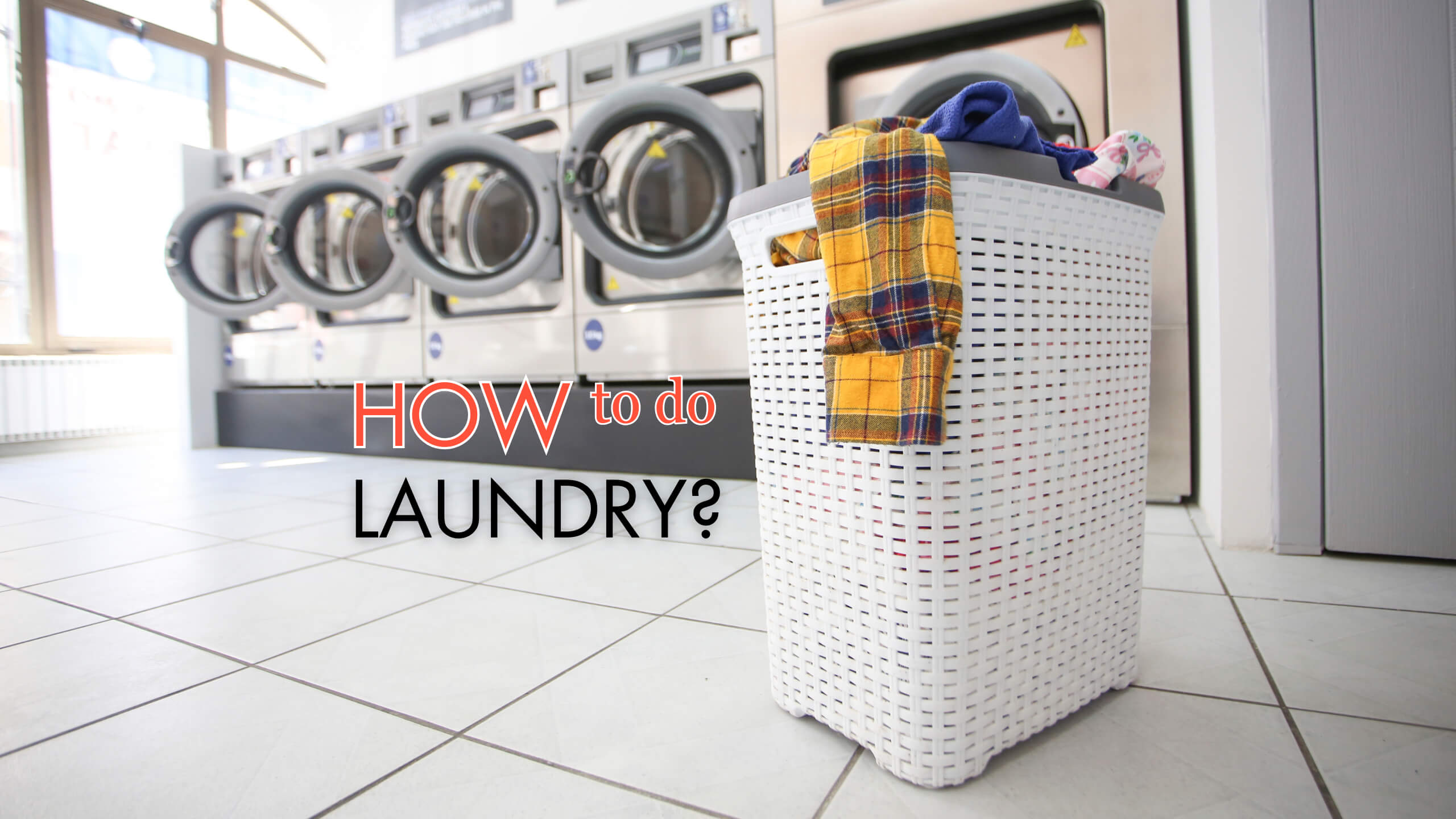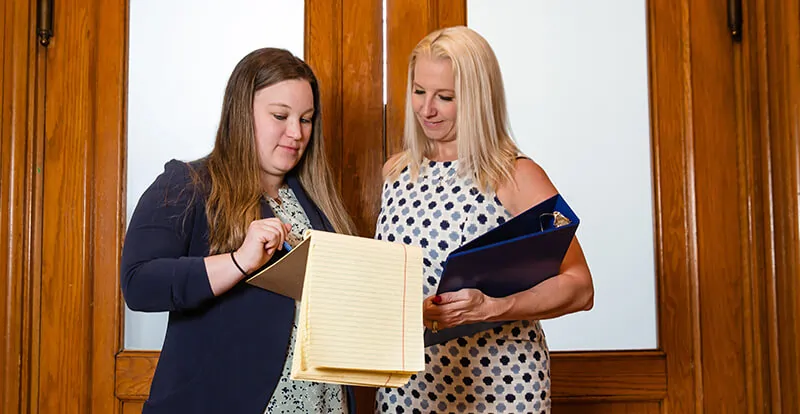Life Skills – How To Do Laundry

More Than You’ve Ever Wanted to Know
Have you ever stopped and thought about how much you know about doing laundry? These days, most machines are actually pretty straightforward – Clothes go in, clothes get wet and soapy, clothes come out clean after some point in time. Still, I don’t think I’ve met anyone who knows how much detergent to actually use or go away from two settings – Delicate or Normal. Yea, this will usually get the job done, but over-washing breaks clothes down, uses more water, and takes more time out of your day. Making some small changes can go a long way to taking better care of your clothes and getting out stains.
THE BASICS OF THE MACHINERY
The first thing you need to do is get to know whatever washer and dryer you’re using. Every machine, regardless of how many bells and whistles, focuses around three basic things. The first is cycle speed. The cycle speed is how fast the drum or agitator will move your clothes around in the wash and spin stages of a load. Each phase has its own cycle speed, and you would select it by things like “Permanent Press” which is fast wash and fast spin, “Regular” which is fast wash and slow spin, or “Delicate” which is slow wash and slow spin.
The second consideration is the cycle length. Whenever you select a cycle speed, the machine will have a preset cycle length that you may be able to adjust (especially on more modern machines). When you run a new load of laundry, you should always aim to select the mode that will get the job done in the least amount of time. Don’t run the machine longer than it has to – you’re just beating up your clothes and wasting water. Washing machines are brutal on clothes and will last longer the less time they’re in wash cycles.
The final option is the water temperature. As a general rule, just use cold water. Hot water used to be most commonly used for things like whites, socks, bed sheets, and really soiled garments, among other things. However, hot water use is more or less a relic from the past when detergents weren’t as well designed. Hot water helped activate some of the more basic ingredients in detergents and would give a better deep clean. Today, most detergents are formulated to do this in cold water. Tide, for example, has launched a “cold water” campaign with people like Ice-T and Stone Cold Steve Austin playing celebrity spoke-person. On top of that, hot water actually sets some stains in and makes them harder to remove.
There are, of course, some exceptions. In the winter, your water can be colder than normally expected and reduce the ability of your detergent to remove stains. At that point, it may be more helpful to switch it up to warm or hot. Otherwise, cold wash will be plenty for almost all your linens and clothes. If you’re concerned about sanitation – the dryer takes care of that. Even direct and prolonged sunshine exposure will sanitize.
ON DRYERS
Like washers, you should focus on using the setting and time that will get the job done with the least amount of effort. If a washer is harsh on your clothes, the dryer wages war on them. The proof is in the lint trap. All those bits of lint are actually the result of small tears and wearing on the threads of your clothing, creating microscopic damages that are destroying your favorite sweaters and jeans.
Unfortunately, the idea of a shorter cycle is directly related to a higher temperature, and lower temp is sometimes related to longer mechanical agitation spinning in the drum. Even more unfortunately, people typically want things done quickly and effectively. That’s why “Regular” is actually the highest temperature setting on the dryer, and that’s why most people end up over-drying their clothes. Permanent Press is medium heat, delicates is low heat, and air fluff is no heat.
The best course of action, though, is to dry as many things as you can by hanging them or laying them flat and allowing them to air dry. If you can hang them outside, even better. Sunshine can actually help brighten whites. If you have something considered delicate or if it has something like sequence on it, you’re probably better off air drying outside of a machine too.
KEEPING THE PARTY GOING
Unless you made a mistake of buying something like a “Smart Washer” (seriously, your washer does not need WiFi), most of them are fairly mechanical and straightforward in how they operate. This makes washers and dryers very easy to maintain on a regular basis.
Most modern washers have a dedicated cleaning cycle. You just drop some bleach in the basket and let the machine go with hot water and nothing in it. You could also use vinegar and baking soda instead, if you have sensitive skin. This will help put an end to musty and moldy odors in the washer. You can also help prevent those odors by leaving the door of the washer open or slightly ajar to allow air circulation into the barrel. High Efficiency (HE) washers are especially prone to that, and it’s important to take clothes out shortly after cycles are completed.
Dryers need a little more care and attention because of the heating elements. Failure to maintain your dryer is a huge fire hazard (about 3,000 fires a year caused by poor dryer maintenance), and that disaster is so, so avoidable. All you have to do is clean the lint trap before every new use, blow out the exhaust vent at least once a year, and don’t overload the dryer. It’s not a bad idea if you use dryer sheets to wash the lint trap with a light detergent once in awhile either. Dryer sheets can build a residue on the trap and be just as blocking as lint.
Beyond that, just make sure that your machines are level and gaskets and seals aren’t breaking down. If your washer or dryer sounds like it’s rocking, or has a noticeable wobble when you push on a corner, you need to level it. Simply locate the footing under each of the front corners of the machine in question and turn the foot to level. If a seal looks worn or cracked, look at getting a replacement for it to keep the machine running.
THE FINER DETAILS OF DOING A LOAD OF LAUNDRY
By the time you’re ready to run a load of laundry, there are a few things to think about: Type of fabric or the amount of dirt, whether to pretreat a stain, how much detergent to use, and then how much to put into the machine.
SORTING
When sorting laundry, you should consider sorting by color shade, fabric weight, fabric type, or the amount of dirt. Sort out as much as you can to ensure that you have a full load, then start consolidating if there’s not enough to justify running it by itself. It is especially important to consider sorting out items with deep colors because they will be more likely to bleed in the wash (especially on the first wash ever for a new item) and will end up dying other clothes. You’ll want to sort out light colors from darks, and all colors from whites. Fabric type will likely be the second most important consideration – sort your delicates from regular clothes. The delicates can’t be washed or dried under the same cycles because they will get beat up.
PRETREATING STAINS
Once sorted, pre-treating stains can be extremely helpful for helping to lift stains out of clothes. Pre-treating should be done before putting a load into the machine. The two most common pretreatment methods are to apply a detergent or enzyme-based material (IE something like a Stain Stick) to the stain and gently massage it into the fabric. Let it sit for a few minutes before washing. The other method is to soak a stain in a solution of water and detergent for up to 30 minutes prior to washing.
If you want a comprehensive guide on stain removal, check out the guide from the American Cleaning Institute.
HOW MUCH DETERGENT SHOULD I USE?
The amount of detergent you need to use is going to depend on how much laundry you’ve loaded into the machine, whether or not you have a High Efficiency (HE) washer or a Standard Washer, and the detergent type. If you have an HE washer, you need to make sure you get detergent that is rated for HE, so that’s the first thing.
Next, figure out your load size. A top-load machine should be about 2/3 full with loosely packed clothes, and a front loader shouldn’t have more than about 80% of the barrel filled. For a front loader especially, you should be able to slide your hand into the barrel between the machine and the clothes and not touch any clothes. If you can’t do that, it’s too full. You want to leave space for things to rotate and move.
Finally, the detergent type – powdered or liquid. At this point, you may just be thinking that you could just read the label on the container and go with the manufacturer’s recommended dose of detergent, right? You could. You won’t be wrong, just wasteful. You actually don’t need that much detergent to clean your clothes, and manufacturers over-recommend the dosage to ensure that there is no question of outcome, and, well, to boost usage and sales. So how much detergent is actually needed? Get ready for this – half what the label recommends. If your detergent is 2x, that is about 2 tablespoons for a regular load. If you have a tide pod-type detergent, you only need one. Powdered detergent only needs 1/4 to 1/3 cup.
Obviously, if something is more soiled than a standard load of laundry, you may want to use more detergent, but for a typical wash, it’s just not necessary.


